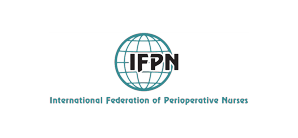EXAMINATION OF THE RECOVERY PROCESS OF CHILDREN AFTER SURGERY
Eda DOLGUN, Burcak SAHIN KOZE, Meryem YAVUZ van GIERSBERGEN, Meltem POLAT, Birsen EROGLU, Ayse ISLAMOGLU, Mustafa Orkan ERGUN
Thursday, April 1, 2021
Publication year:
2021
Authors:
- DOLGUN Eda, Lecturer, Assistant Prof, PhD RN, Department of Surgical Nursing, Ege University Nursing Faculty, Izmir, Turkey
- SAHIN KOZE Burcak, Lecturer, Research Ass., RN, MSc, PhD, Department of Surgical Nursing, Ege University Nursing Faculty, Izmir, Turkey
- YAVUZ van GIERSBERGEN Meryem, Lecturer, Professor, RN PhD, Department of Surgical Nursing, Ege University Nursing Faculty, Izmir, Turkey
- POLAT Meltem, Nurse, Department of Paediatric Surgery, Ege University Hospital, Izmir, Turkey
- EROGLU Birsen, Nurse, Department of Paediatric Surgery, Ege University Hospital, Izmir, Turkey
- ISLAMOGLU Ayse, Head Nurse, Department of Paediatric Surgery, Ege University Hospital, Izmir, Turkey
- ERGUN Mustafa Orkan, Department of Paediatric Surgery, Ege University Faculty of Medicine, Izmir, Turkey
Keywords index:
Pages: 168-176
Abstract:
Ιntroduction: Surgery is a stressful experience for children and families, but important is the recovery period after the
surgery.Purpose: This study was conducted to examine the recovery process of children after surgery.Methods: This
descriptive type study was conducted on 274 pediatric patients who had urgent and planned surgery other than major
gastrointestinal surgery and agreed to participate in the study voluntarily. A question form designed by the researchers
following the literature was used as a data collection tool. Groups were evaluated using the Kruskal Wallis H test, in
variables that did not show normal distribution. Results: Of the participants, 46.4% of children's surgeries were
outpatient (OP), 36.5% were emergency (E), 17.2% were planned (P) surgeries. Immediately after surgery, the mean
pain levels were 2.3 for "OP", 2 for "E", 3.2 for "P", and the next days were below 1 and 1. Among all the participants,
52% of "OPs", 39% of "E", 36.2% of "P"s were mobilized within 3-6 hours after the surgery. At the hospital 94.5%,
89%, 95.7% of the children respectively, there was not any development of complications, while after discharge, 94.5%,
94%, 95.7% did not have any problem at home. Conclusion: It was determined that the majority of children did not
have any problems in the recovery process and returned to daily life activities a week after the surgery.
Download PDF


